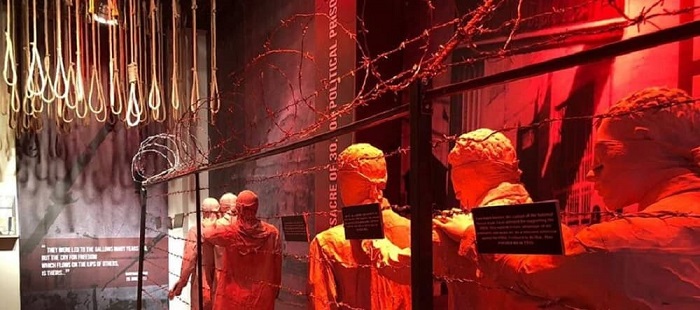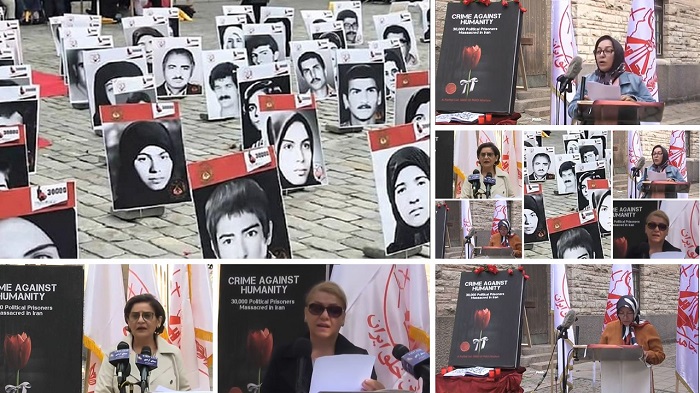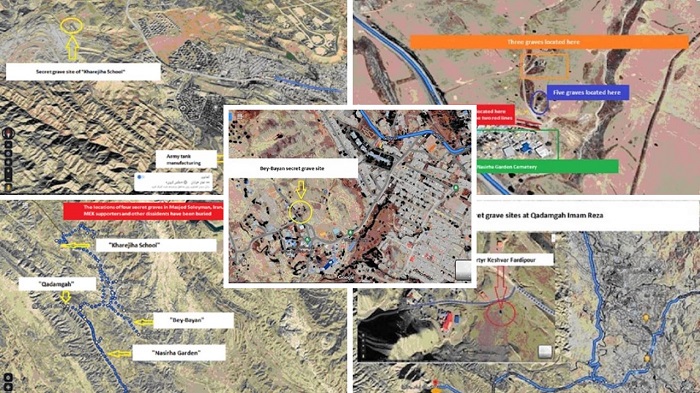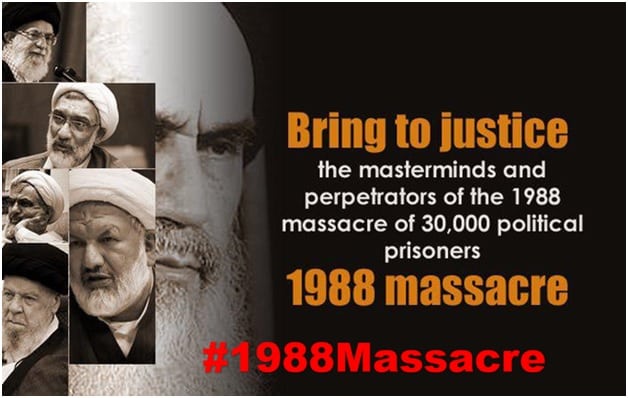
(PMOI / MEK Iran) and (NCRI): A monument made in memory of 30,000 political prisoners, who were brutally executed in the summer of 1988, mainly supporters of the MEK.
Following the summer 1988 massacre, which resulted in the execution of over 30,000 political prisoners by the mullahs’ regime, millions of people across Iran have seen their lives ruined. Members and sympathizers of Iran’s opposition the People’s Mojahedin of Iran (PMOI / MEK Iran) made up the majority of the victims.
Mojtaba Akhgar, a survivor of the genocide
Mojtaba Akhgar, a survivor of the genocide, gives declarations of what he went through in prison when the regime was carrying out the killings.
“I was arrested in 1982 for supporting the MEK and I spent ten years in the regime’s prisons. On July 30, 1988, they took to me to the general ward of the prison. Upon my return, I realized the situation was not normal. My cellmates told me the authorities were separating the prisoners based on their sentences… Very few of us were left in the cell,” said Mr. Mojtaba Akhgar.

(PMOI / MEK Iran) and (NCRI): the regime’s atrocities across Iran’s death corridors during the 1988 massacre.
The death corridor
“They took me out after a couple of questions, and I was sitting in the death corridor. I saw numerous prison officials, including those known as Naserian and Hamdi Noury, and other guards taking prisoners to the death commission, then transferring them to the end of the corridor, where they were lined up to go to the gallows…” Mr. Akhgar continued.
The political prisoners became aware of their fate after establishing communication using the morse code, discovering that many of their fellow prisoners were being transferred to their deaths.
“The executions continued, and I witnessed these scenes all day long. At night they took me back to my cell. I was there for a couple of days and continued communicating with other prisoners in the adjacent cells through morse code…” Mr. Akhgar said.

(PMOI / MEK Iran) and (NCRI): witnesses and the families of massacre victims held rallies near the courthouse and around the world, and spoke out about their experiences.
Prison officials tortured other prisoners
As the executions proceeded, prison officials tortured other prisoners in order to prevent them from establishing contact with the MEK.
“The situation continued until August 16, when they transferred us to ward 13, which was the general ward. We were there for a couple of days. One day Naserian came and called out some names, including Javad Taqavi and me. He ordered us to the prison yard, where we were taken while blindfolded. He told us that the Sharia judge has sentenced you to lashes. I was supposed to receive 160 lashes and Javad 100. They tied us to a metal bed and flogged us. I was severely injured and hardly got up from the bed,” Mr. Akhgar explained.
Only a small percentage of the prisoners survived the massacre in Iran in 1988. The mullahs’ regime’s savagery against the Iranian people is highlighted by the haste with which the killings were carried out and how the thousands of corpses were buried in mass graves.

(NCRI) and (PMOI / MEK Iran): 4 More Mass Graves Discovered From the 1988 Massacre in Iran.
The Death Commission in charge of Tehran’s prisons
“I do not recall how many inmates were in Gohardasht prison that year, perhaps around three to four thousand. But in the same ward that Naserian said, we were the only survivors of the massacre. We were about 160 or 170 prisoners. They transferred us to Evin after a day,” Mr. Akhgar said.
As a member of the Death Commission in charge of Tehran’s prisons, Iranian regime President Ebrahim Raisi is well-known for his direct role in the 1988 massacre. Given that Hamid Noury is currently on trial in Stockholm for his role in the same massacre, the international community should bring Raisi and the other Iranian officials involved to justice as well.
“Today, we see that Hamid Abbasi, or Hamid Noury, one of those who took people to the Death Commission in 1988, is being tried in Sweden. This criminal is one of the pawns trapped in Sweden today. Everyone else in this regime is like Hamid Noury. We’re not dealing with one or two individuals. The entire regime of the Islamic Republic is a rule of ignorance and crime,” Mr. Akhgar concluded.

(NCRI) and (PMOI / MEK Iran): Hamid Noury, Iranian Regime Henchman, by Swedish Prosecutor Authority.
MEK Iran (follow us on Twitter and Facebook)
and follow Maryam Rajavi’s on her site 
and follow NCRI (Twitter & Facebook) and People’s Mojahedin Organization of Iran – MEK IRAN – YouTube
